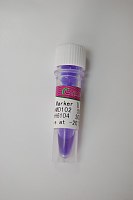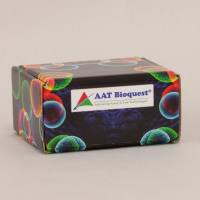The Isolation of Genomic DNA from Invertebrates
互联网
541
Generally, genomic DNA is used either for the construction of genomic libraries or for Southern blot analysis. For several reasons, it is frequently preferable in the field of invertebrate neurobiology to screen, at least initially, genomic rather than complementary DNA (cDNA) libraries for sequences of interest (for example, see refs. 1–3 ). First, low-abundance mRNAs (e.g., those encoding neuroreceptors; see refs. 2–4 ) have only a very small probability of being present in cDNA libraries. Second, the expression of genes that encode neuronal proteins may be subject to developmental regulation, and the corresponding mRNAs may be present in the organism only at certain stages (4 ). Third, it is well established, at least in vertebrates, that certain neuron-specific proteins (e.g., ligandgated ion channels, voltagegated ion channels, and guanine nucleotide-binding protein-coupled receptors) are encoded by gene families (see refs. 5 ′7 ). For the complete characterization of such families, therefore, the screening of genomic libraries maybe preferable, since each gene should ideally be present in the library at an equivalent level. In contrast, sequences encoding individual members of gene families are normally present in cDNA libraries at frequencies that are dependent on the abundance of their corresponding mRNAs. Fourth, the genome sizes of some well studied invertebrate species are quite small when compared with those of vertebrates: For example, the haploid genome sizes of the nematode Caenorhabditis elegans and of the fruit fly Drosophila melunogaster are approx 8.0 � 107 and 1.4 � lo8 bp, respectively (8 ). In contrast, the haploid genome size of humans is 2.8 � 109 bp (8 ). Therefore, when using representative genomic libraries from such invertebrates, it is possible to know whether the entire genome has, indeed, been screened. After DNA sequence analysis has confirmed the identity of a particular genomic clone, subfragments can be used to determine the abundance of the corresponding neuronal mRNA by Northern blot analysis and to investigate the genomic complexity by Southern blot analysis.







